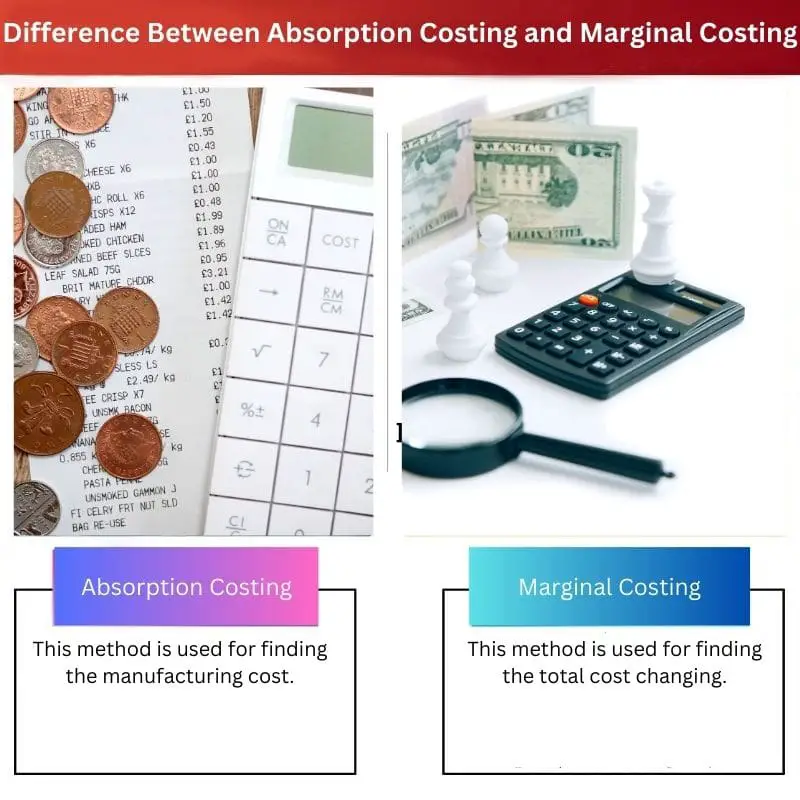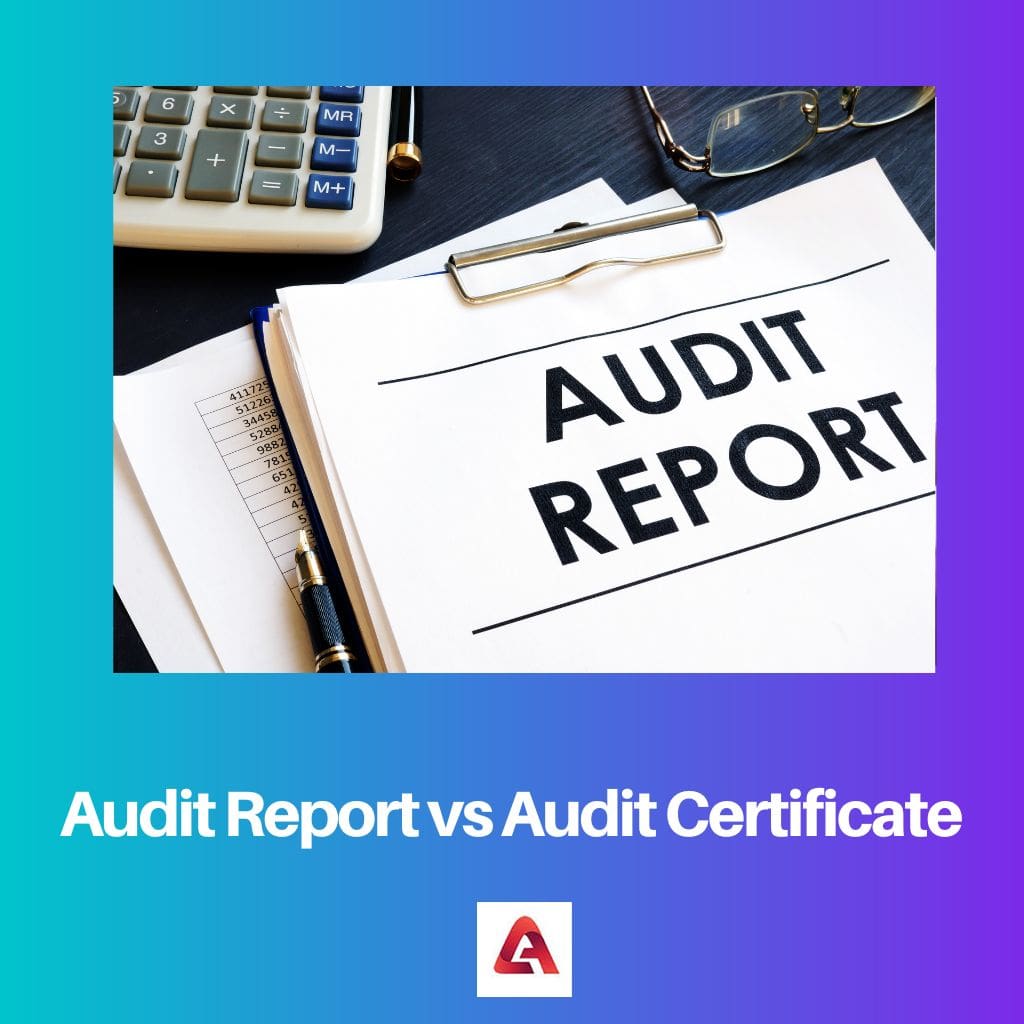Costing is the method used in business to decide the costs to the business elements. It is an important factor as it determines the company’s overall growth and development.
Absorption Costing and Marginal Costing are both used to determine the cost and have their own methods to implement the technique.
Key Takeaways
- Absorption costing allocates all production costs to the product, including fixed and variable, while marginal costing only considers variable costs.
- Absorption costing is more suitable for long-term decision-making, whereas marginal costing is more appropriate for short-term decisions.
- Marginal costing provides clearer information about cost behavior, but absorption costing provides a more comprehensive view of total costs.
Absorption Costing vs Marginal Costing
The difference between Absorption Costing and Marginal Costing is that absorption costing uses both variable and fixed costs while marginal costing uses only variable cost. Absorption costing cannot be easily operated as it requires us to study a lot. In contrast, Marginal costing can be easily operated without any difficulties and hurdles.

Absorption cost includes all the costing methods and techniques, and it is one of the effective costing methods as it helps in increasing the company’s profit.
There is a formula used for calculating Absorption Cost. Absorption costing uses GAAP complaints. It is not easy to learn, and it requires more hard work.
Marginal Cost is to find the total cost changing. There are some benefits of using Marginal Cost as well. Some of them are you have to study at least 10 hours per week. Also, you can have the privilege of studying extra hours.
Your GPA will increase from 3.0 to 3.5. So, you can see the difference clearly: if you study for extra 2 hours per week, you can find an increase in your GPA by 0.5.
Comparison Table
| Parameters of Comparison | Absorption Costing | Marginal Costing |
|---|---|---|
| Definition | This method is used for finding the manufacturing cost. | This method is used for finding the total cost changing. |
| GAAP Complaint | Yes | No |
| Advantages | It takes care of all the production costs. | It is less complicated. |
| Disadvantages | It is difficult to compare the cost of control. | They have long-term pricing, and they ignore market pricing methods. |
| Reporting Method | External Reporting | Internal Reporting |
What is Absorption Costing?
Absorption Costing is the costing method which refers to all manufacturing costs. Mainly management uses this kind of method to find the costs incurred on a particular product. These can be classified into further categories as well.
They are direct costs and indirect costs. The things that are included in direct costs are materials and Labor. The things that are included in indirect costs are insurance, factory rents, compliance, and administration costs.
It comes under the part of accounting. Commerce Students use this method in their higher studies and even in their workplace. The absorption costs also include some other costs, such as variable costs, fixed costs, and semi-variable costs.
Variable cost is used for increasing or decreasing the production of goods. Fixed costs do not do any alteration, irrespective of what the company produces. Semi-variable costs either increase or decrease upon the batches of production.
We can even call absorption costing full costing. The reason behind this is it calculated all the costs involved in that particular association. Many people prefer this because it gives precise value when we do costing.
This also gives high profit and report when we do the costing. Because the cost of production will be completely absorbed in this method, this cost helps in increasing the overall profit of the company.

What is Marginal Costing?
Marginal Costing is the technique used to charge the variable costing unit. But on the other hand, the fixed cost of the company won’t be used for contribution.
Marginal Costing implies a technique called Additional Costing. This can be used by total variable cost. Marginal Costing can even be calculated using a formula. Marginal Costing does not use GAAP complaints.
Marginal Costing depends on four characteristics as Profitability, Price Determination, Stock Valuation, and Divided into Fixed Cost and Variable Cost. In Fixed and Variable costs, the costs are calculated on the basis of variability. I
In stock Valuation, only the goods that are finished, the works that are in progress, and the variable cost are used and taken into consideration. In Price Determination, the prices are either determined on the basis of marginal cost and marginal contribution.
In Profitability, the department’s profit is taken into consideration.
There are three facts concerned with Marginal Costing as Cost Ascertainment, Special Technique, and Decision Making. Marginal Costing assists the managers in taking business decisions, the services that are included, and so on.
It also plays a role in a company’s increasing or decreasing level of production.

Main Differences Between Absorption Costing and Marginal Costing
- The absorption Costing method uses net profit per unit, while the Marginal Costing method uses contribution per unit.
- Since absorption costing uses a fixed method to determine the cost, their profit will be affected. On the other hand, the marginal costing profit volume ratio is used to measure the profit.
- Absorption costing uses variable and fixed costs and takes them into consideration. While marginal costing only uses variable costs and takes them into consideration.
- Absorption costing uses the overheads recovery method. But marginal costing calculates each contribution of the unit.
- Absorption costing uses GAAP complaints. But marginal does not use that.






